Friends:
Rita and I condensed several hundred pictures from two digital cameras into this Snapfish album of 92 photos. Some are included in the narrative below.
Some background:
Petra is located in present day Jordan and may be best known as the place where Indiana Jones (in his “Last Crusade”) and his father (played by Sean Connery) ride horseback through a narrow gorge which opens into a dramatic view of the rose-colored Treasury carved into the mountainside. Our personal interest in the trip came more from several friends who had visited and encouraged us to go.
Petra has also gained recent notoriety by being chosen as one of the New Seven Wonders of the World as determined by an extensive popular vote process (the other winners being the Taj Mahal in India, Machu Picchu in Peru, Chichen Itza in Mexico, Christ Redeemer Statue in Rio, the Colloseum in Rome and the Great Wall of China – the Pyramids were not included in the voting because they continue as an Ancient Wonder of the World and the only one still standing). So, we had an added incentive: we had seen the other six New Wonders.
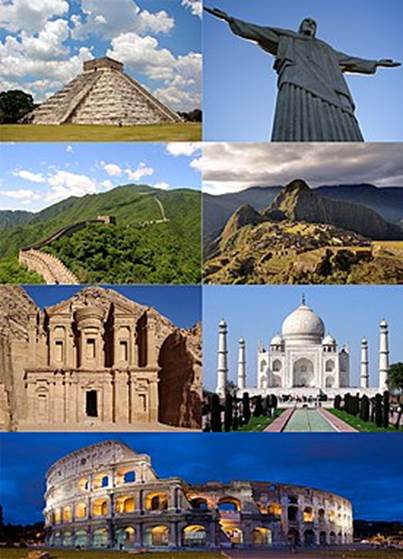
Petra was built about 2200 years ago by the Nabataeans who were ancient Arab tribes that ruled much of Arabia and controlled many trade routes for the caravans of silk, spices, ivory and animal hides. At the Petra crossroads, they levied tolls and protected caravans. The area was annexed to the Roman Empire in 106 AD, but the locals remained prosperous until the trade routes changed. The Nabataeans had absorbed outside cultural influences as evidenced by the various architectural styles in the buildings and tombs. Most of the major facades in the mountains, including the Treasury, are elaborate entrances for tombs rather than buildings that extend into the mountains – so Indiana Jones was not really inside the Treasury when he worked his way through the series of booby traps in his quest to beat the Nazis to the Holy Grail.
Petra also includes public areas such as a Roman-style amphitheater, colonnaded streets, a pool complex, temples and an elaborate system of aqueducts and cisterns to capture scarce water. Petra was eventually abandoned and after the 14th century completely lost to the West. It was rediscovered by a Swiss traveler in 1812 when he disguised himself as an Arab pilgrim and was allowed in by the nomads that camped among the ruins. The resultant publicity led to a famous series of drawings and a poem that fostered international interest in Petra. When the government of Jordan took control of the area, they granted commercial concessions to the resident families who remain to this day as the traders within Petra. There are active excavations that continue to uncover important finds, but with no literature left behind, the builders of Petra are a lost civilization but for the legacy of their architectural marvels.
Our journey:
We started in Amman where we stayed overnight and then traveled south with a driver and guide for the 3-hour trip on the Desert Highway. Our guide Ibrahim was born in Bethlehem and had moved to Jordan after the 1967 war with Israel – his language at home had been Aramaic (the language spoken by Jesus), and he also speaks fluent Arabic, English and German. Arriving about noon, we dropped off our bags at the Movenpick Hotel and walked over to the main gate where there is a small commercial area with the obligatory Indiana Jones Gift, Coffee and Snack Shops.
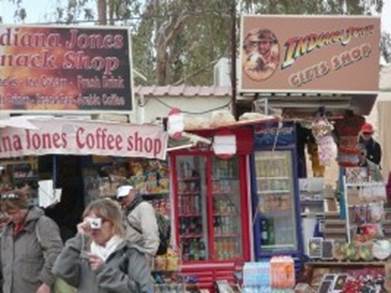
After entering the gate, there is an initial half-mile walk through some minor ruins, leading to the Siq, a 3/4 mile passage hemmed in by sandstone cliffs of beautiful geological formations highlighted by wind and water weathering in shades of red, pink and rose and often streaked with colors from minerals.
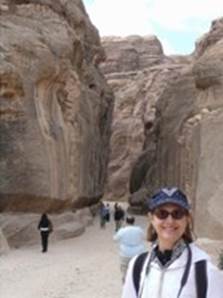


We next get to the “money shot”, the view of the Treasury through the end of the Siq, and then the Treasury in full. We got four versions of this – in and out the first day and a repeat on the next day.
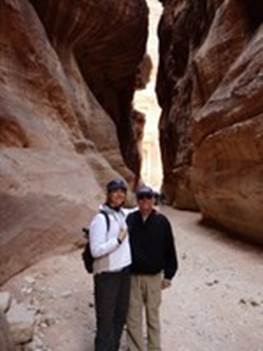
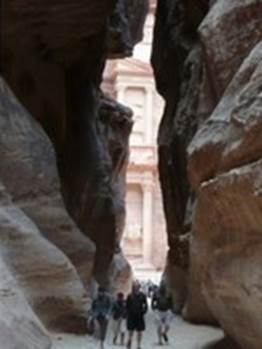
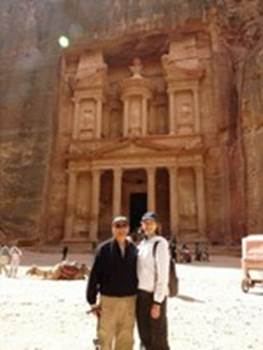
Petra is much more than the Siq and Treasury. The complex covers several square miles with many tombs built into the mountains and excavated ruins of various public areas. Our big venture the first day was to climb one of the mountains to reach the High Place of Sacrifice. Much of the mountain trail involved flights of steps cut into the rock, and along the way, there were many tombs, temples, water harvesting systems, rock relief carvings, vistas of Petra, an assortment of chickens and donkeys and locals selling crafts and souvenirs. It was about an hour up and another hour down, and with no food other than our fiber bars and little water, we were beat by the time we got back down. We would continue to pay with very sore legs for another three days.
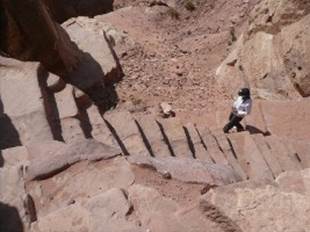
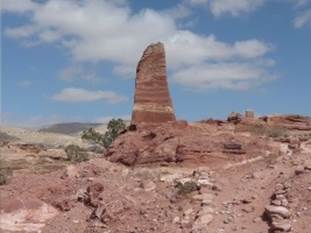
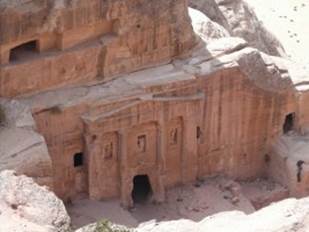
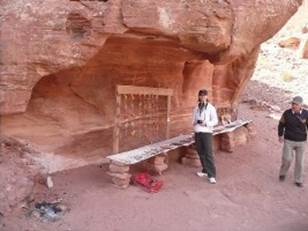
To finalize the first day, we passed by the Royal Tombs, Qasr al Bint…
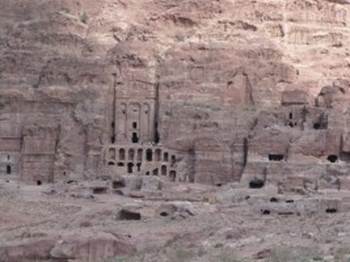
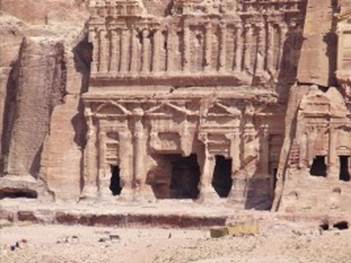
…and the only surviving freestanding building, the public square, and a 6th century Byzantine church that was recently excavated.

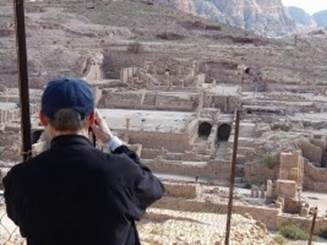
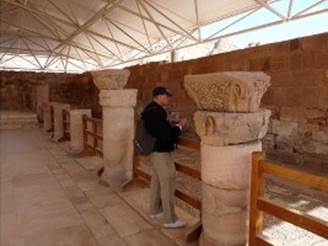
Many of the photos give different views and sunlight/color/shadows for our morning and afternoon trips in and out of the complex.
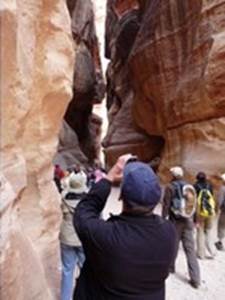

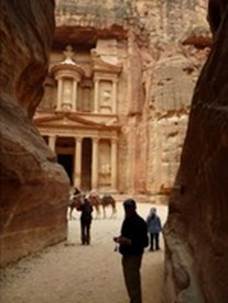
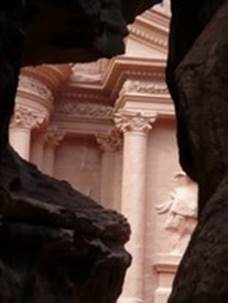
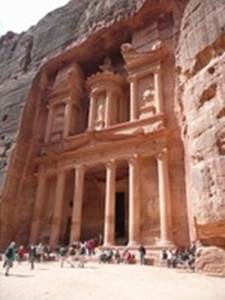
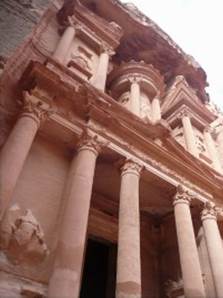
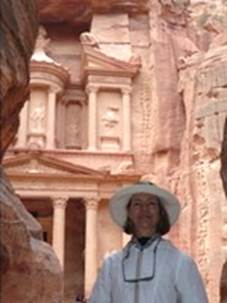
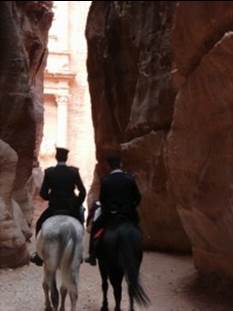
Other shots:
Dams have been built within the Siq to protect against flash floods
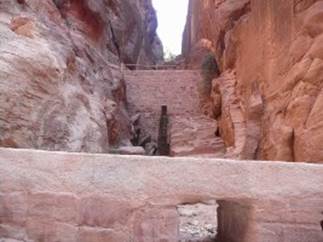
Footholds on the outer edge of the facades were used by workers during construction which progressed from top to bottom.
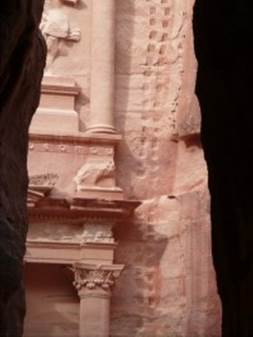
Close-ups show statuary damage that occurred after the rediscovery in the 1800’s – target practice for somebody.
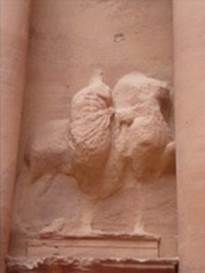
Urn Tomb.
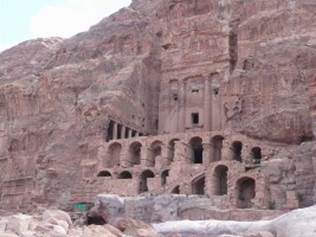
Sextius Florentinus Tomb, only tomb with a sufficient inscription to identify its occupant.
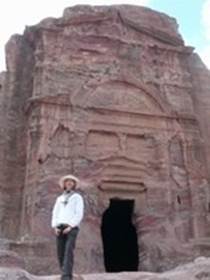
Local on a cell phone; waste truck and camel, the new and old of transportation.
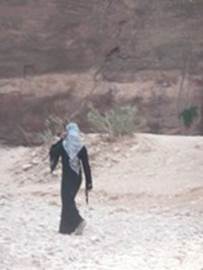
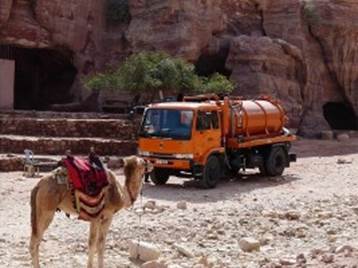
“Elephant” formation.
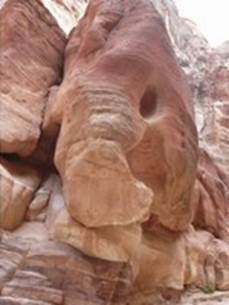
Rita’s final exit from the Siq with ceremonial guards behind her.

After our early morning visit to the complex on the second day, we headed north back to Amman on the more scenic but slower Kings’ Highway. This would take about 6 hours, but took us through several villages and gave us glimpses of a Crusader castle in Karak and a man-made lake plus stops at Madaba and Mount Nebo. Madaba is known as the City of Mosaics, and the highlight is a 6th century Byzantine mosaic map of Jerusalem and other holy sites. The map has been incorporated as part of the floor in a contemporary Greek Orthodox church.
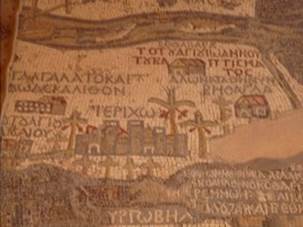
Mount Nebo is where Moses is said to be buried and where God showed Moses the land promised to the descendants of the Jews, although Moses would not be allowed to go. [This was the basis for the prophetic analogy used by Martin Luther King in his “I’ve Been to the Mountaintop” speech the night before his assassination.]The Pope visited Mount Nebo in 2002. There are views of Jerusalem (on a very clear day), Jericho and the Jordan River emptying into the Dead Sea.
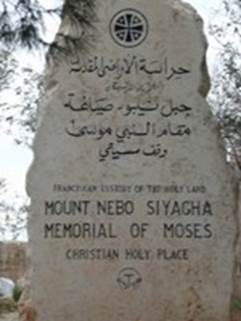
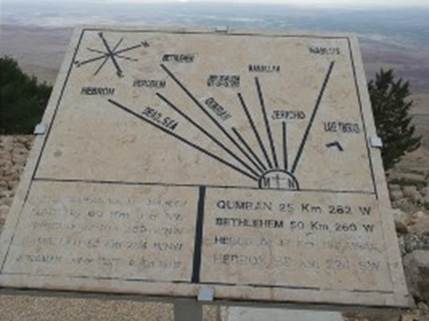
We stayed overnight in Amman and then headed to Dubai for our cruise of the Persian Gulf.